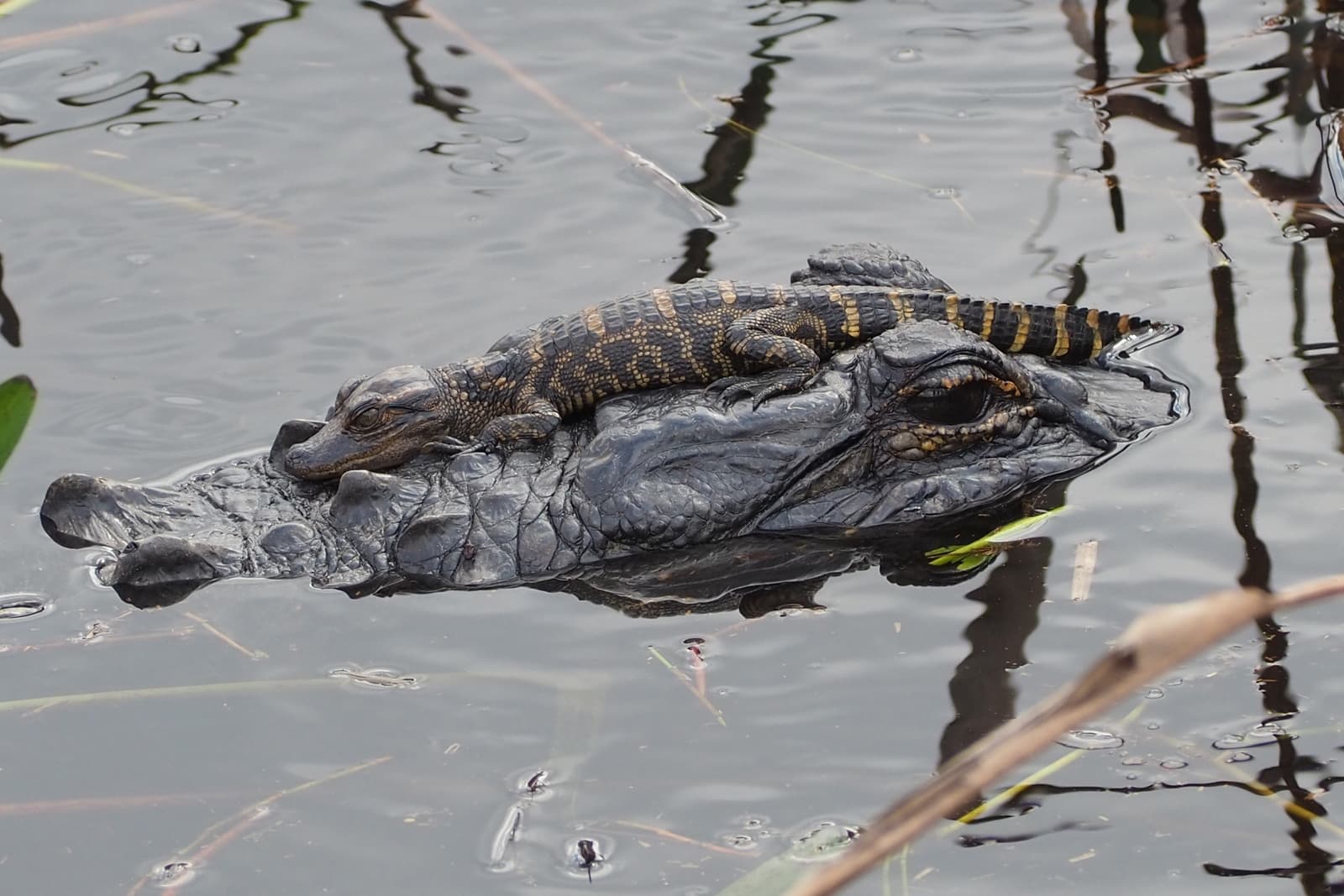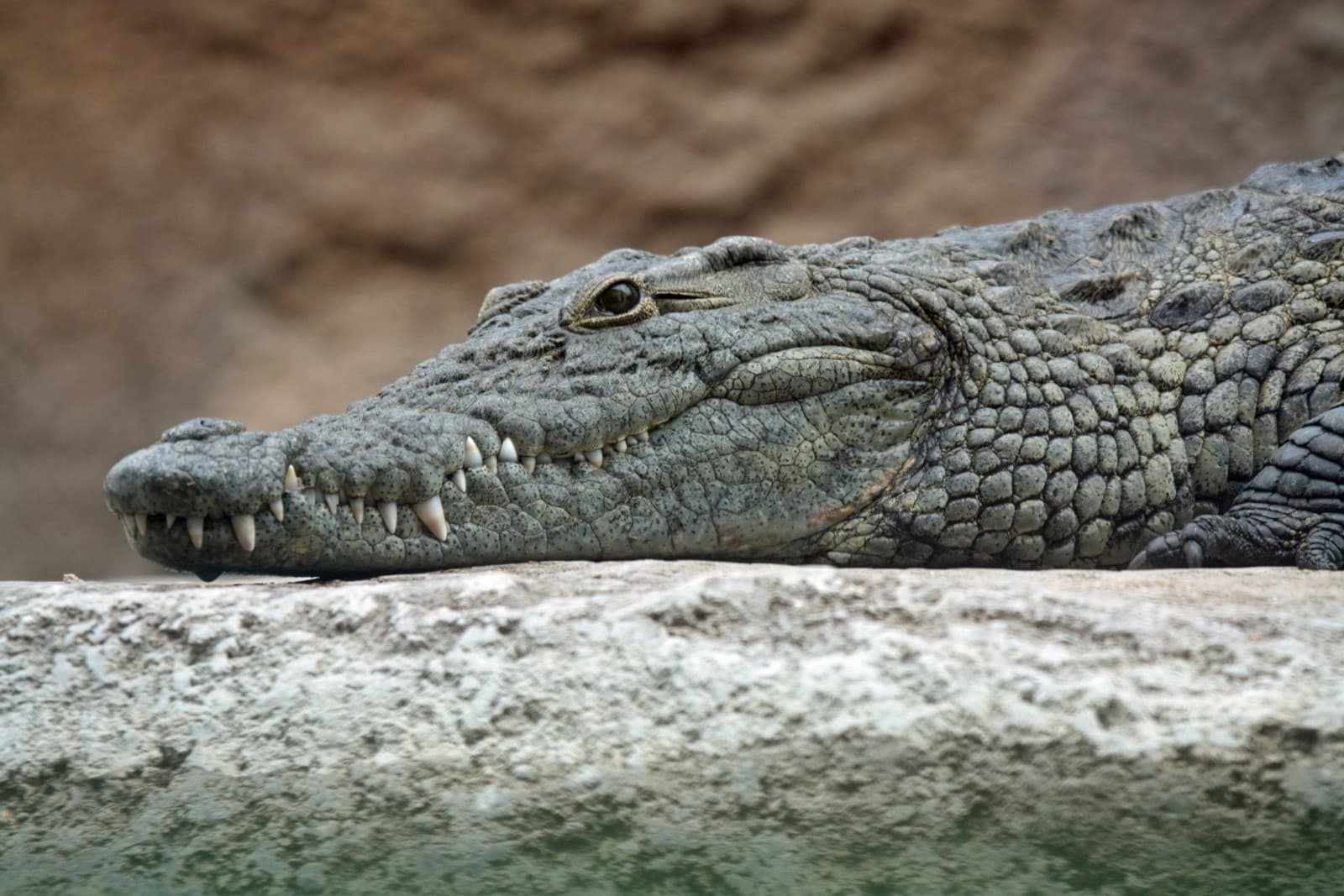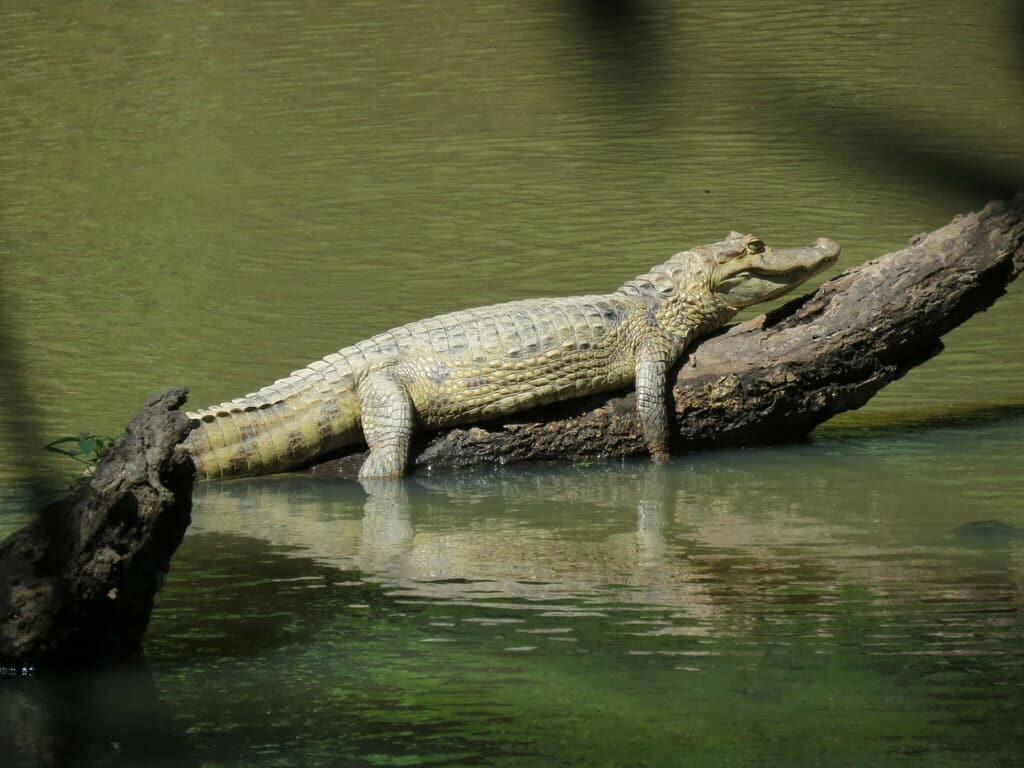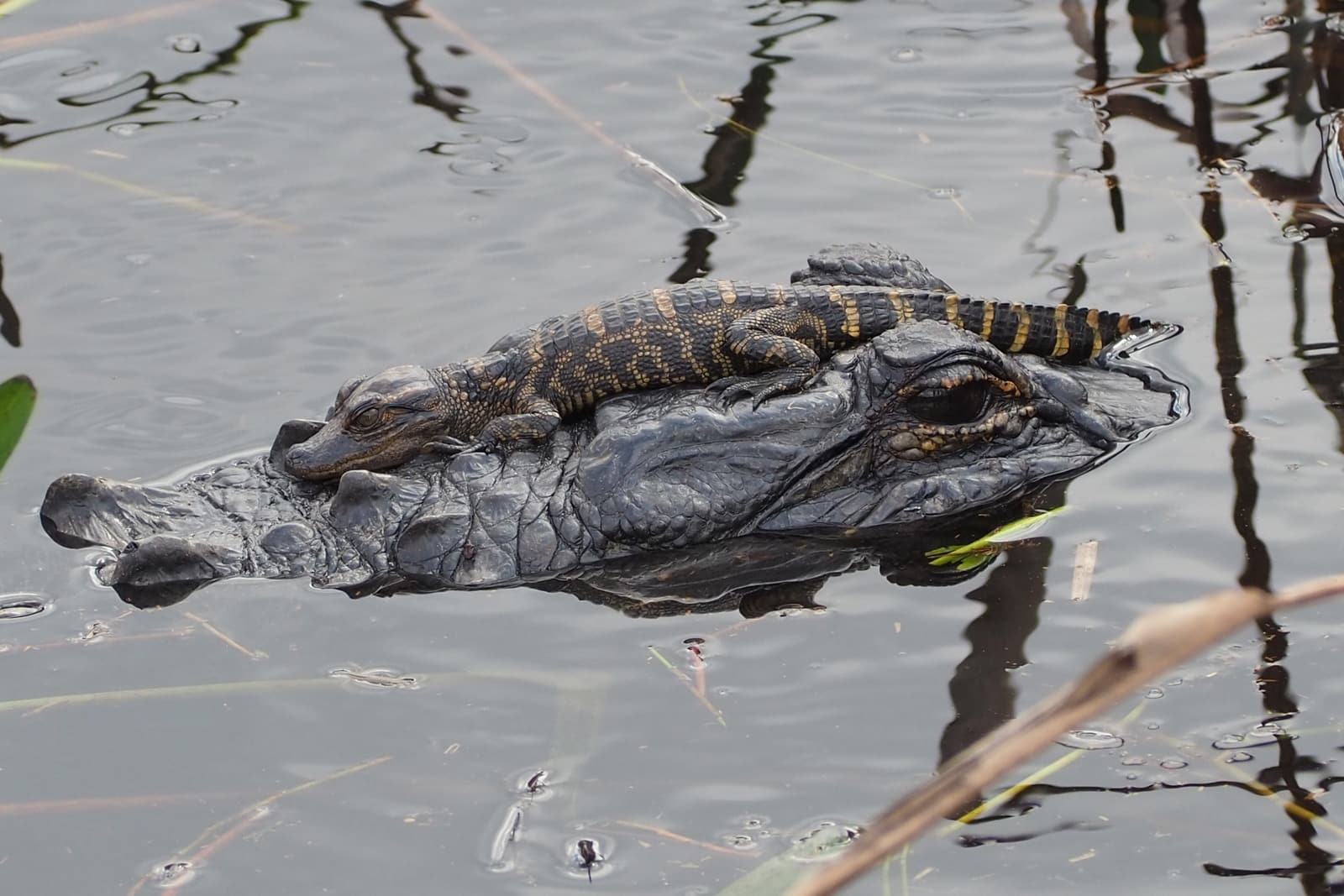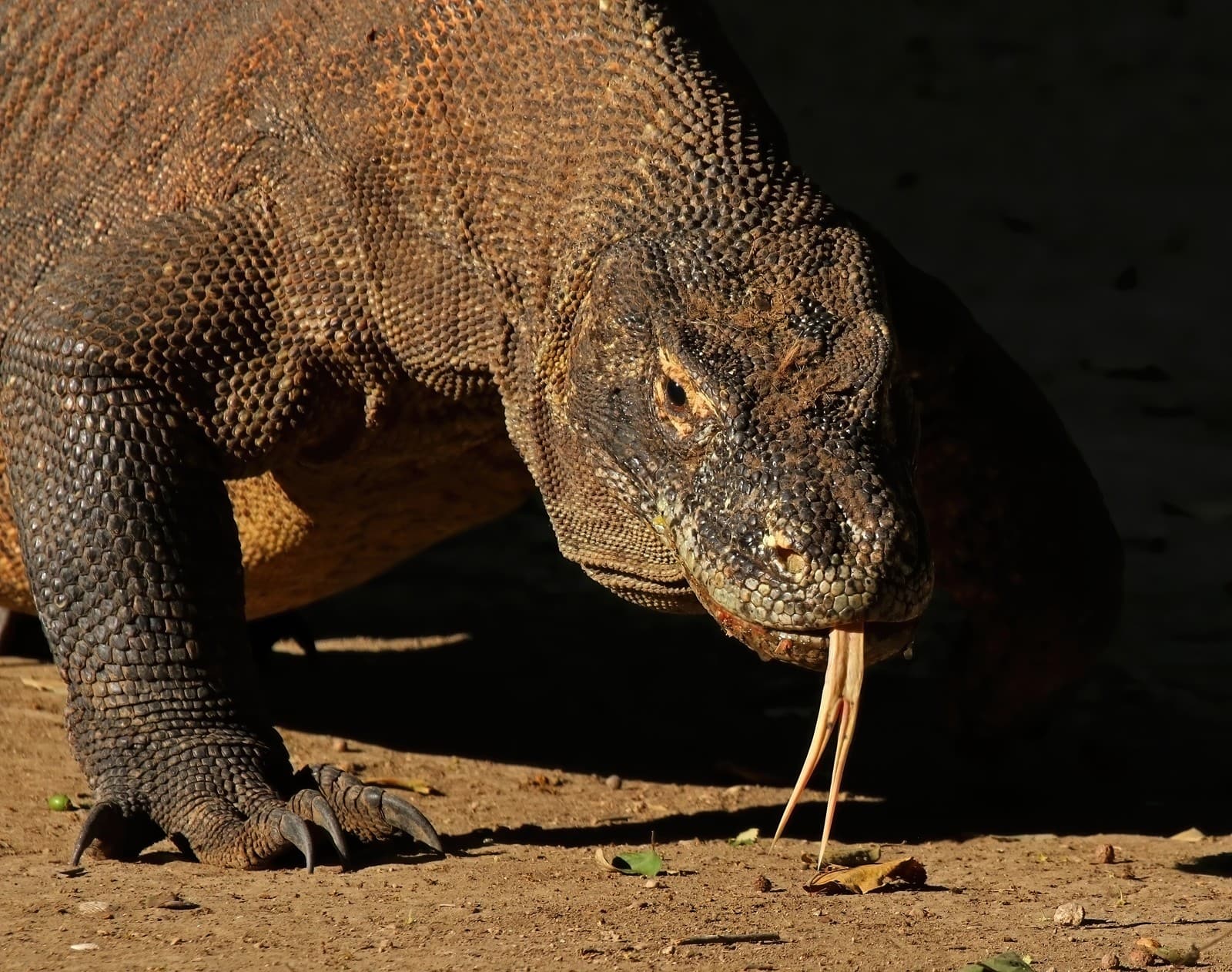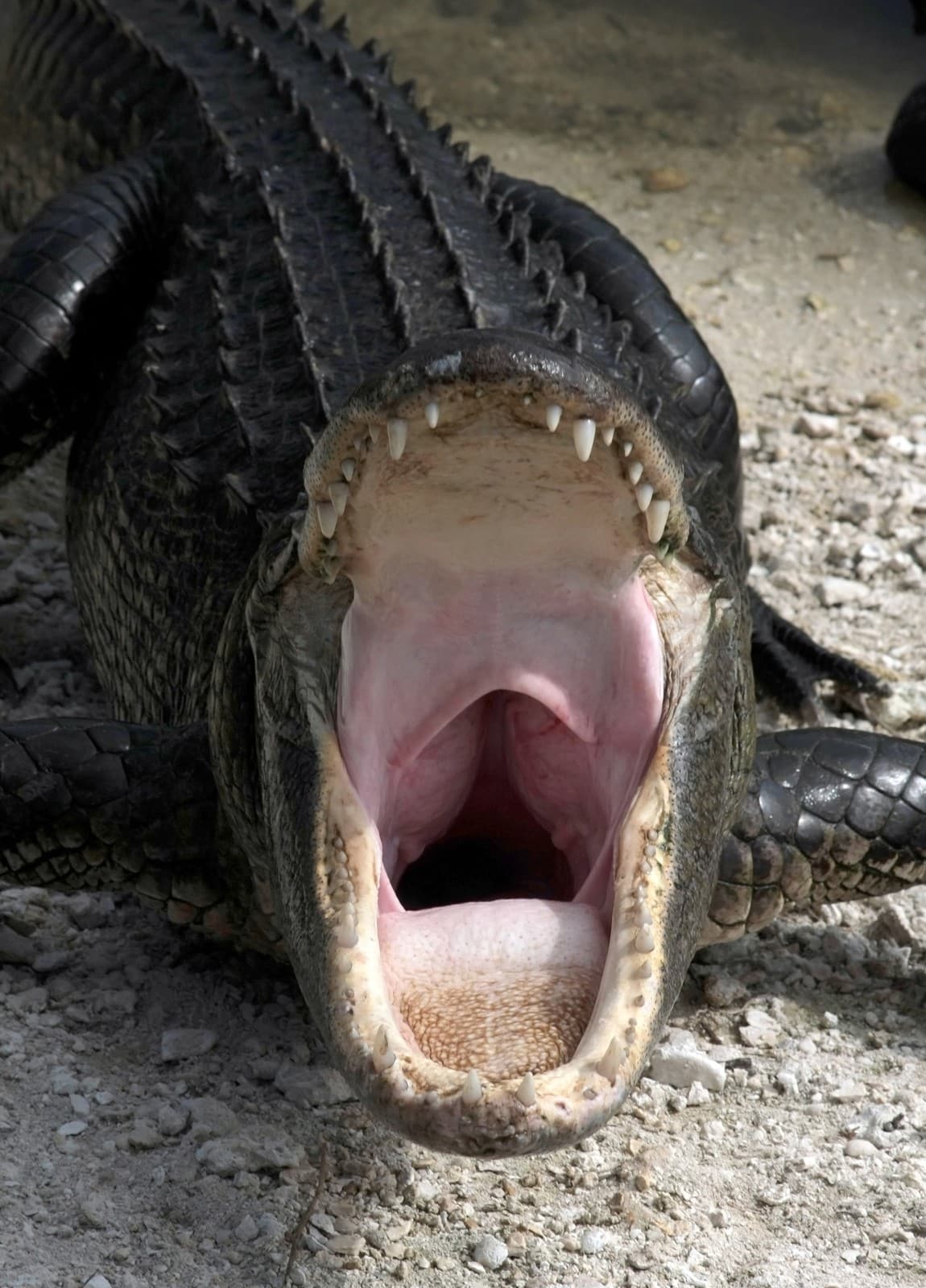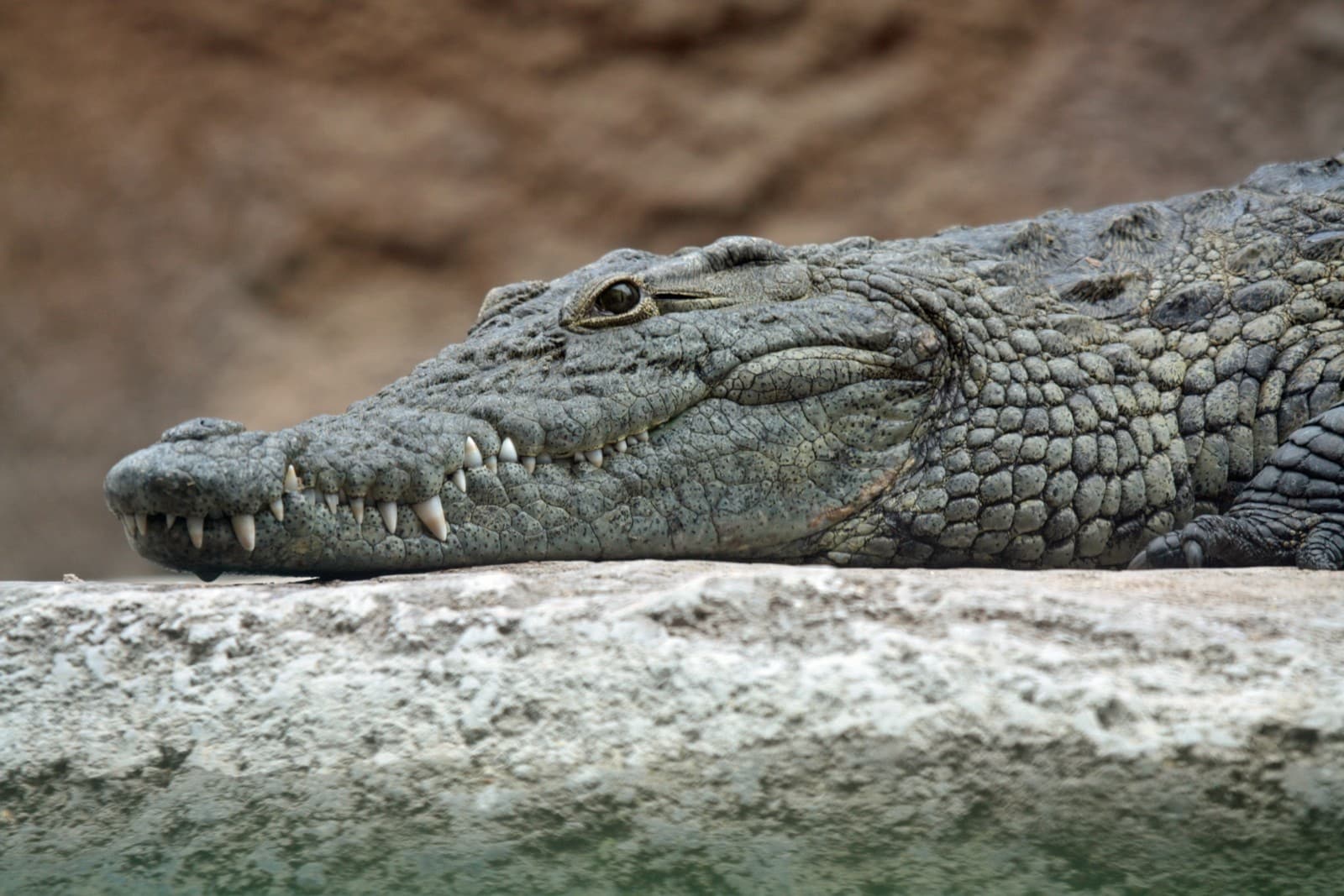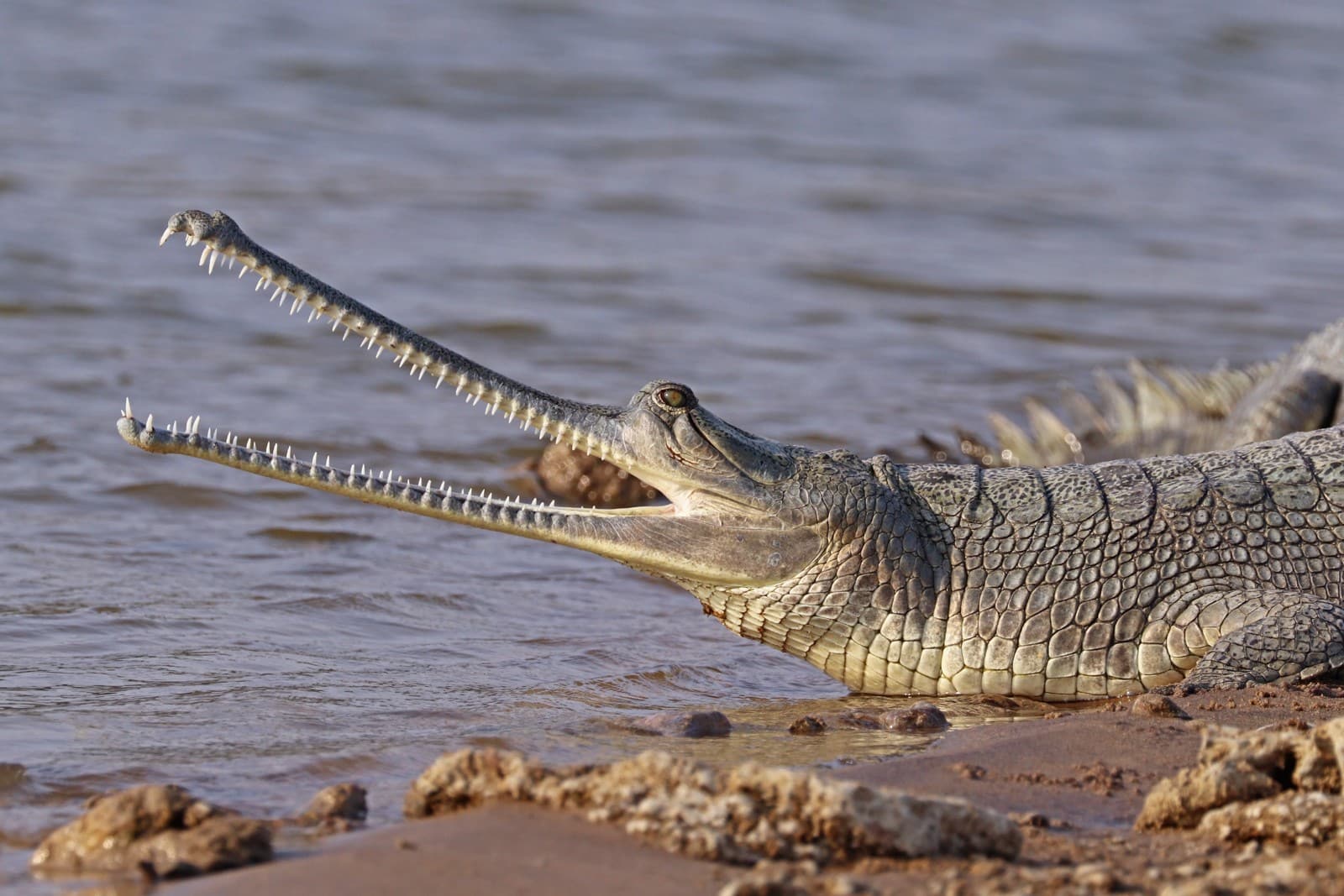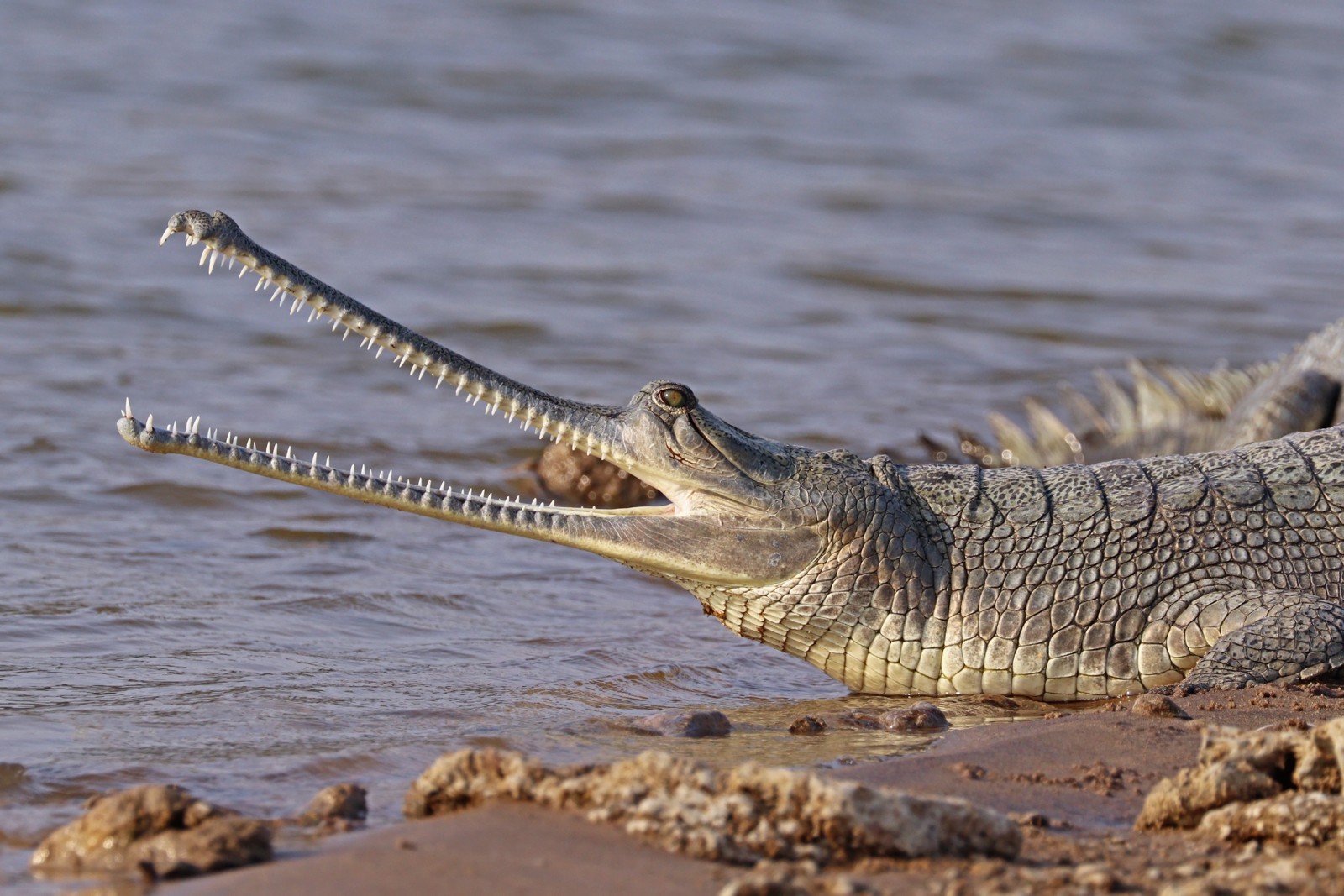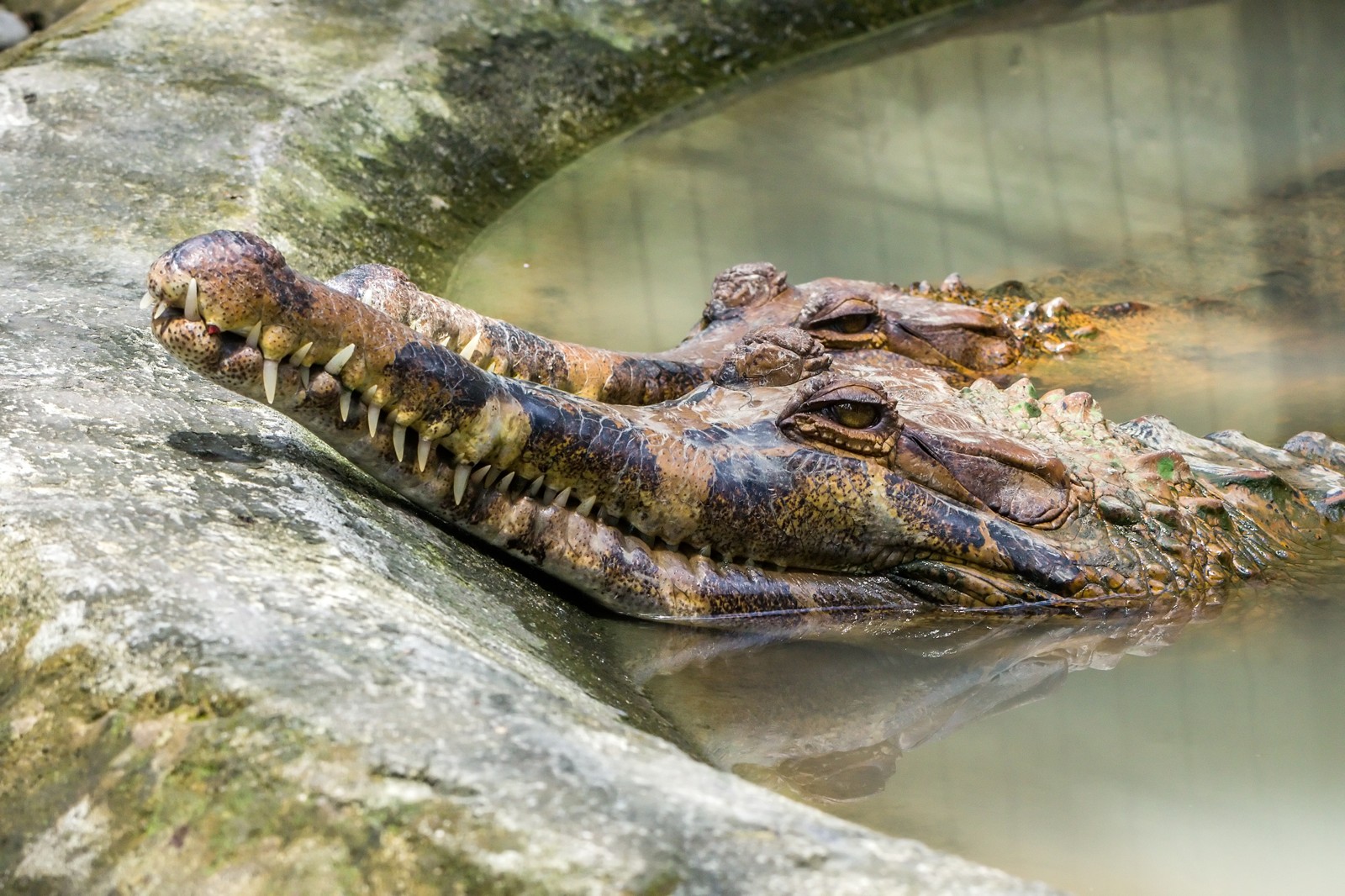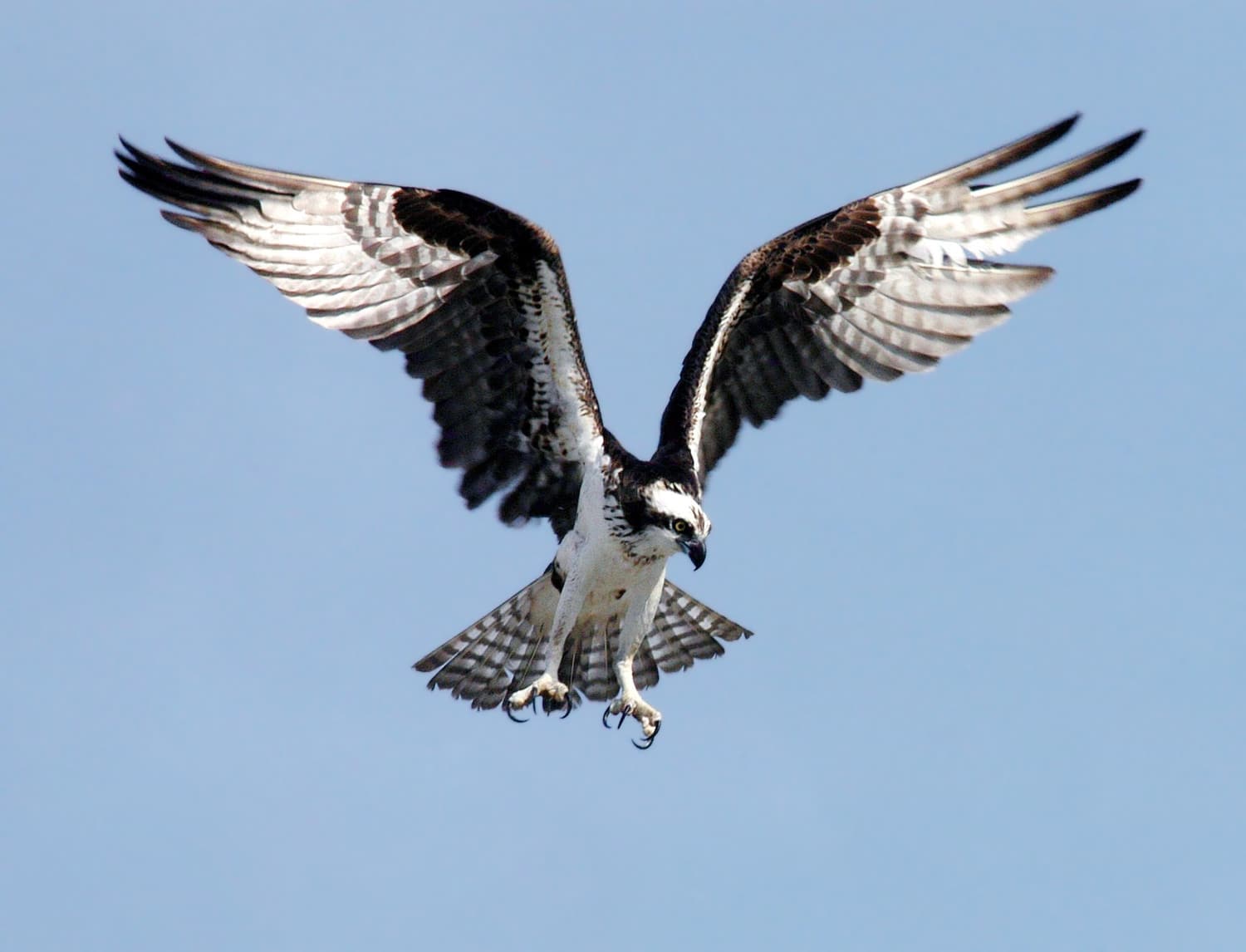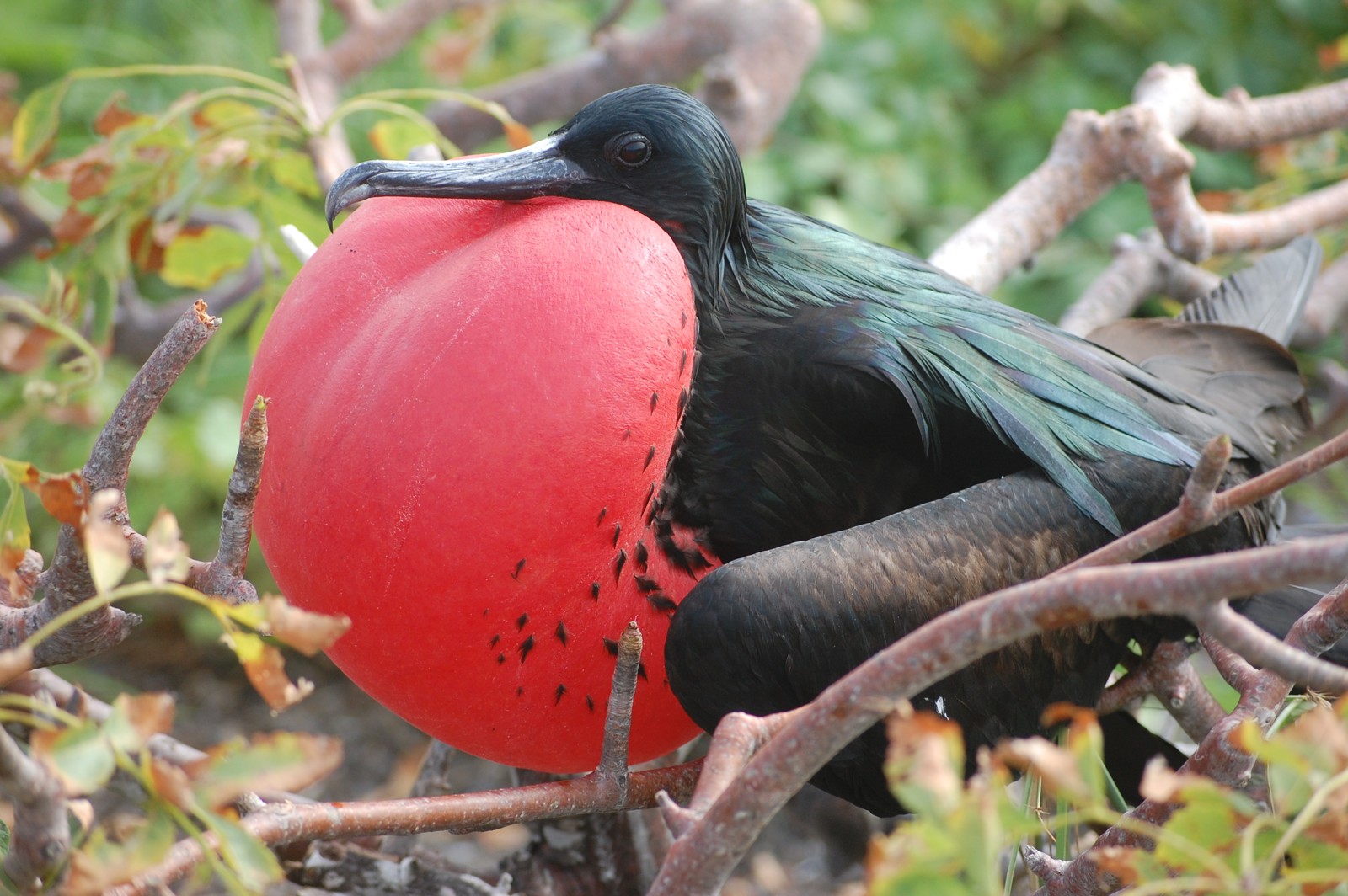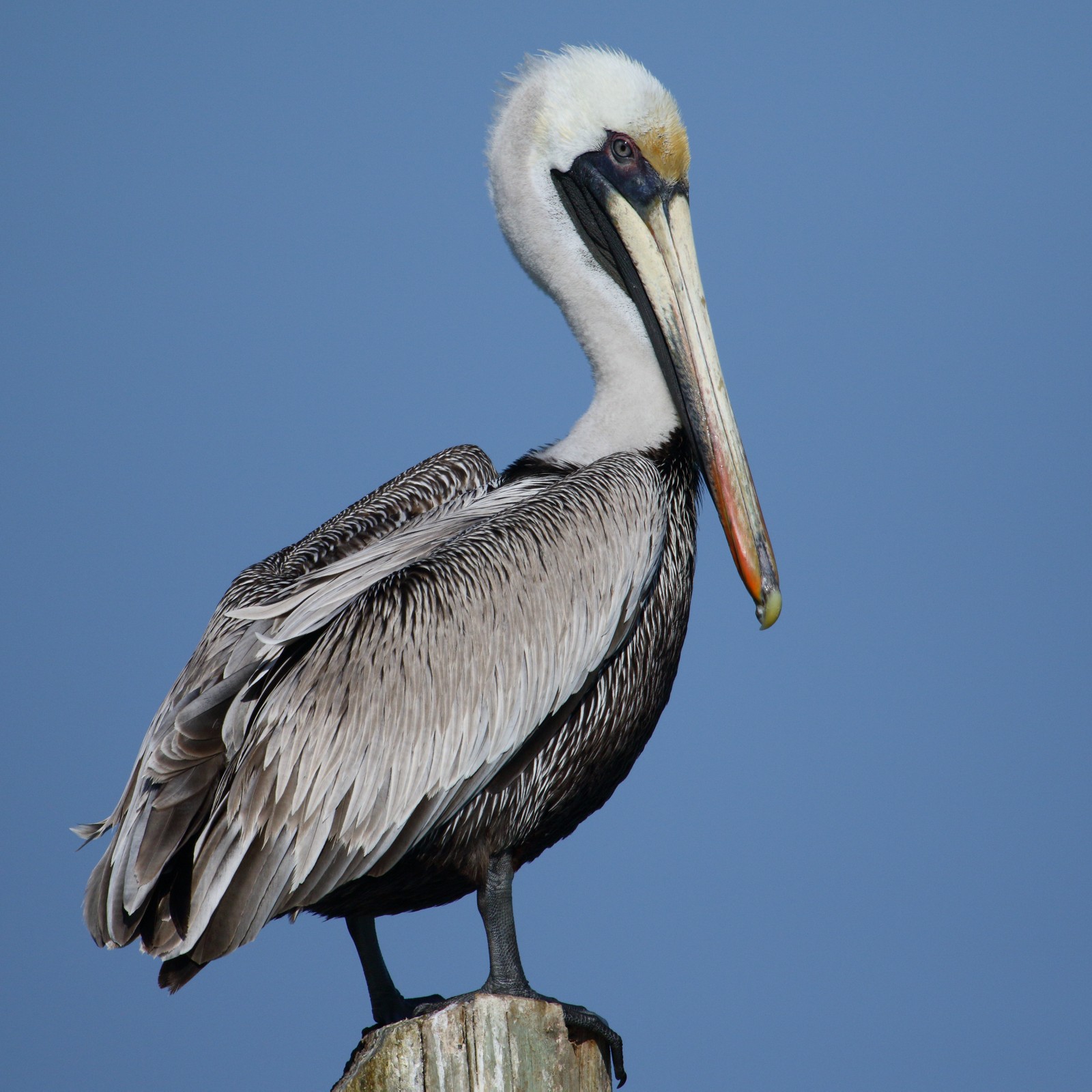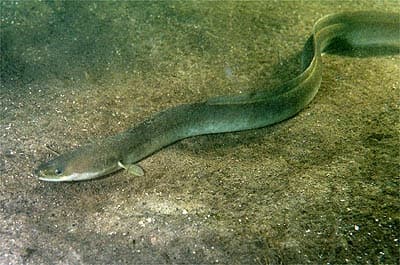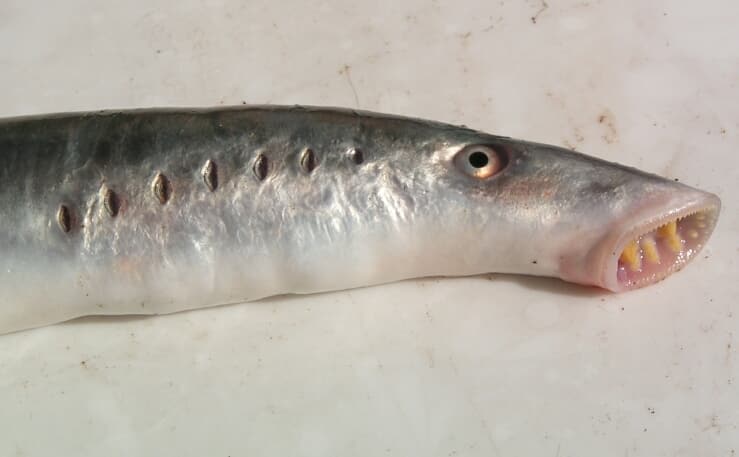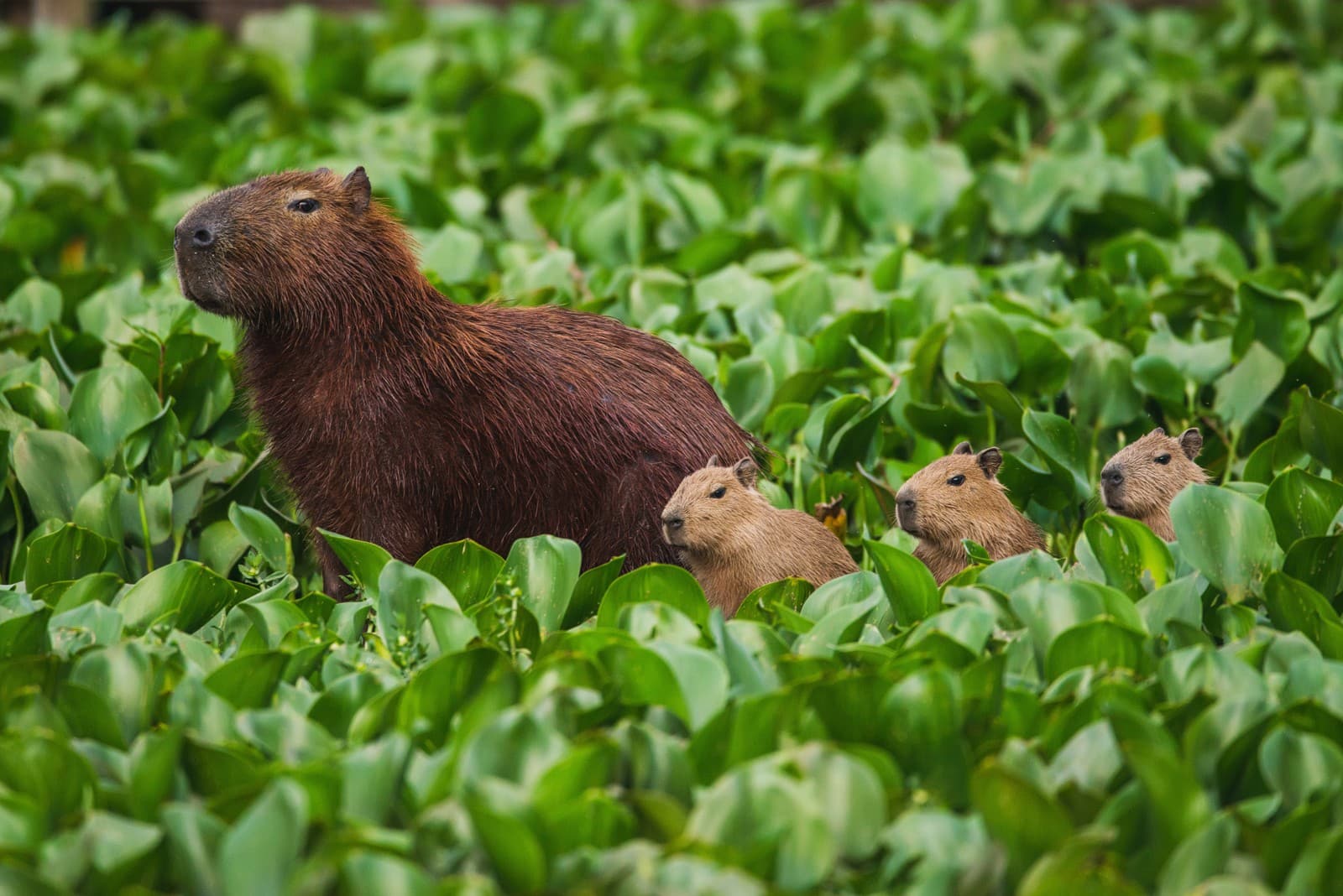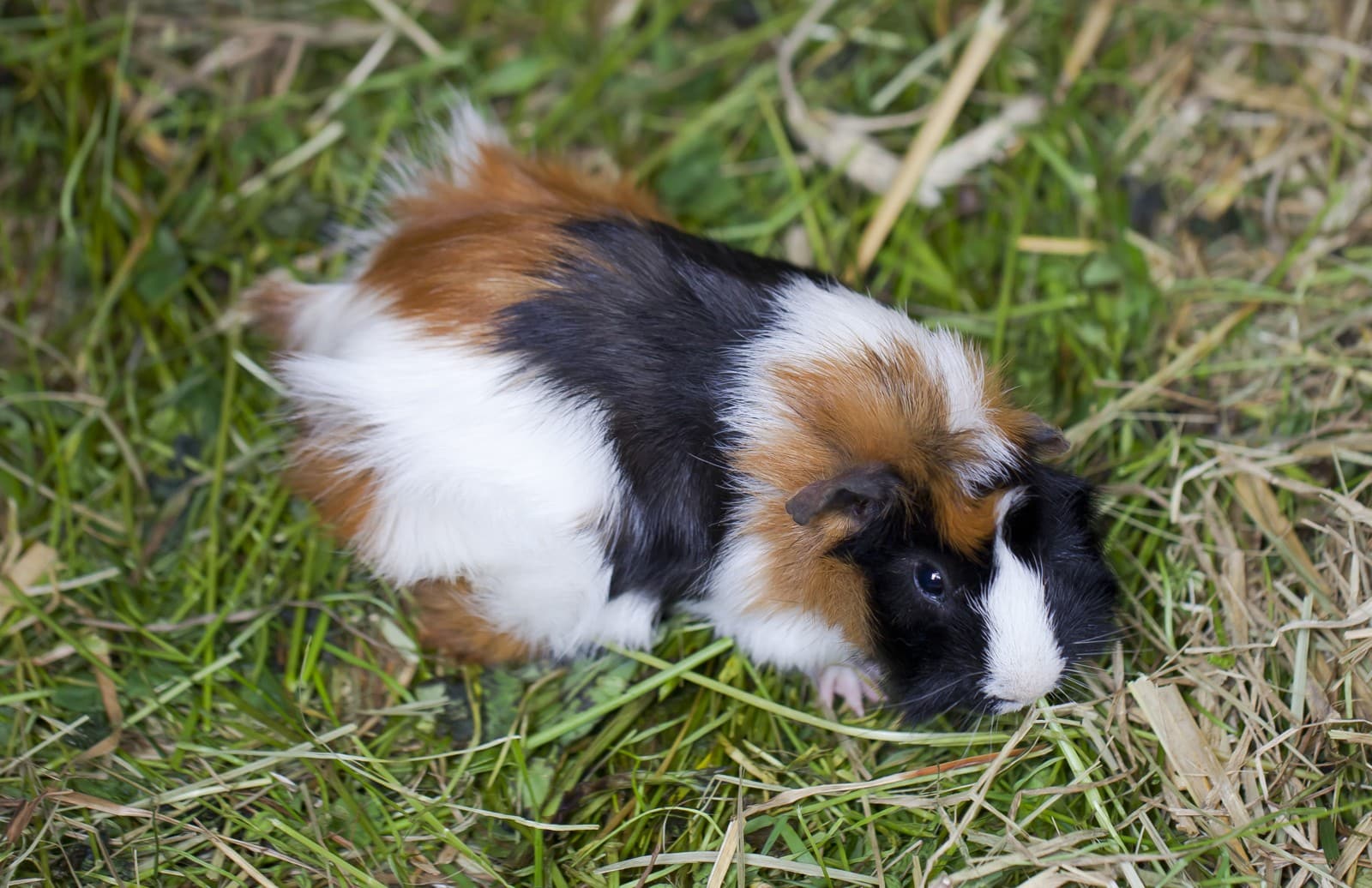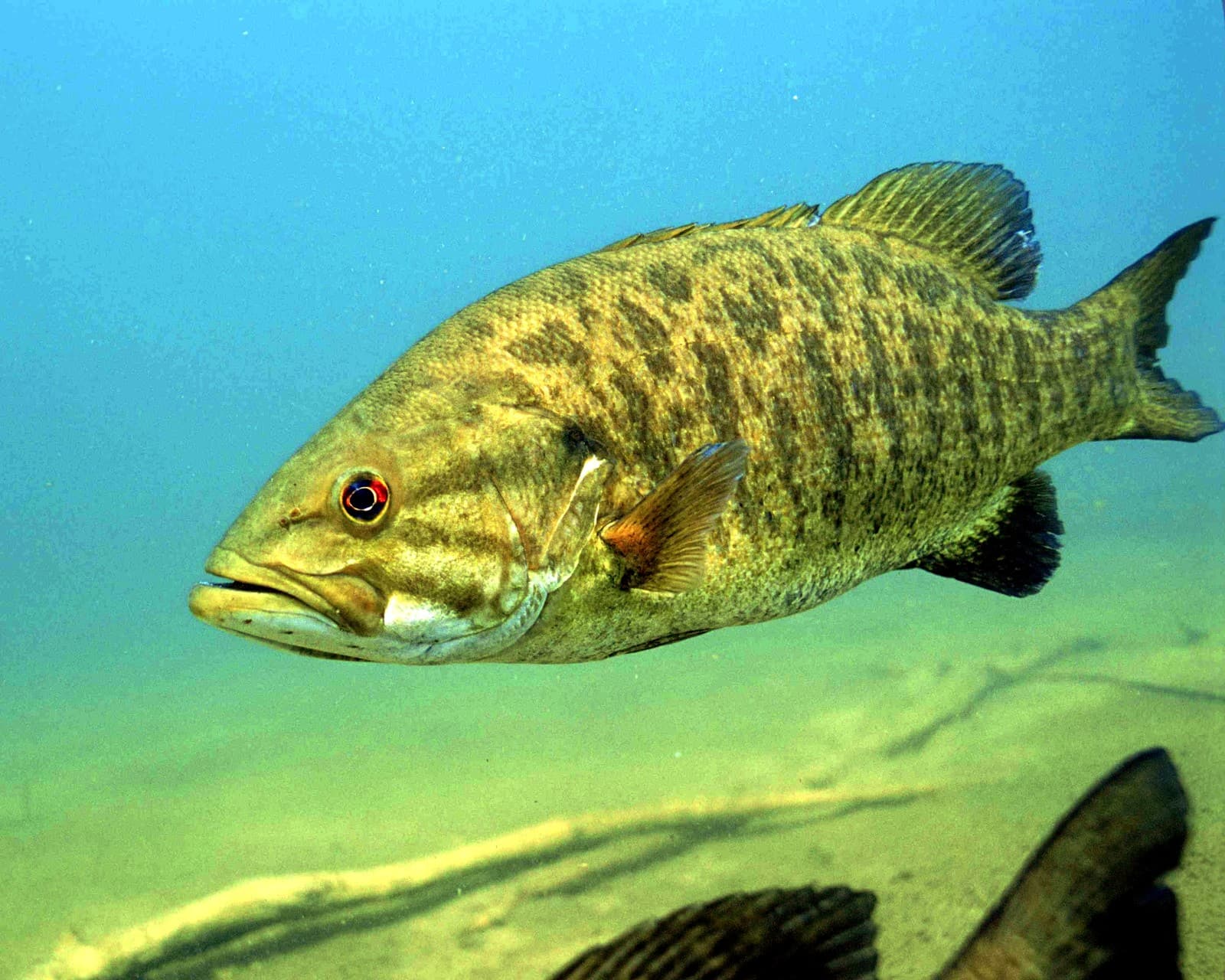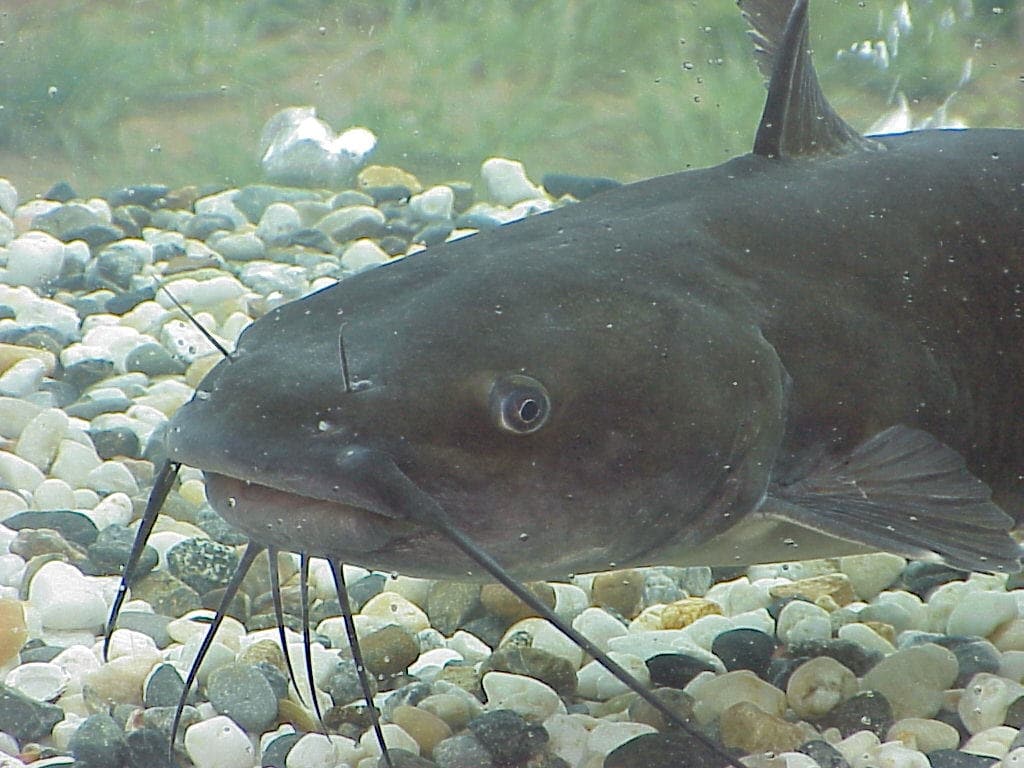Alligator vs Gharial: A Complete Comparison
When comparing alligator vs gharial, we encounter two remarkably different members of the crocodilian family. While alligators are broad-snouted generalist predators reaching lengths of 13 feet (4 meters), gharials possess needle-thin snouts and can grow to an impressive 20 feet (6 meters), making them the longest of all living crocodilians. These ancient reptiles have evolved distinct features that reflect their specialized hunting strategies and preferred habitats.
The contrast between these prehistoric-looking predators extends far beyond their snout shapes. Alligators thrive in diverse wetland environments across the Americas, while gharials are critically endangered fish specialists confined to the northern Indian subcontinent’s river systems. Their divergent evolution has produced fascinating adaptations that showcase nature’s ability to craft perfectly suited predators for different ecological niches.
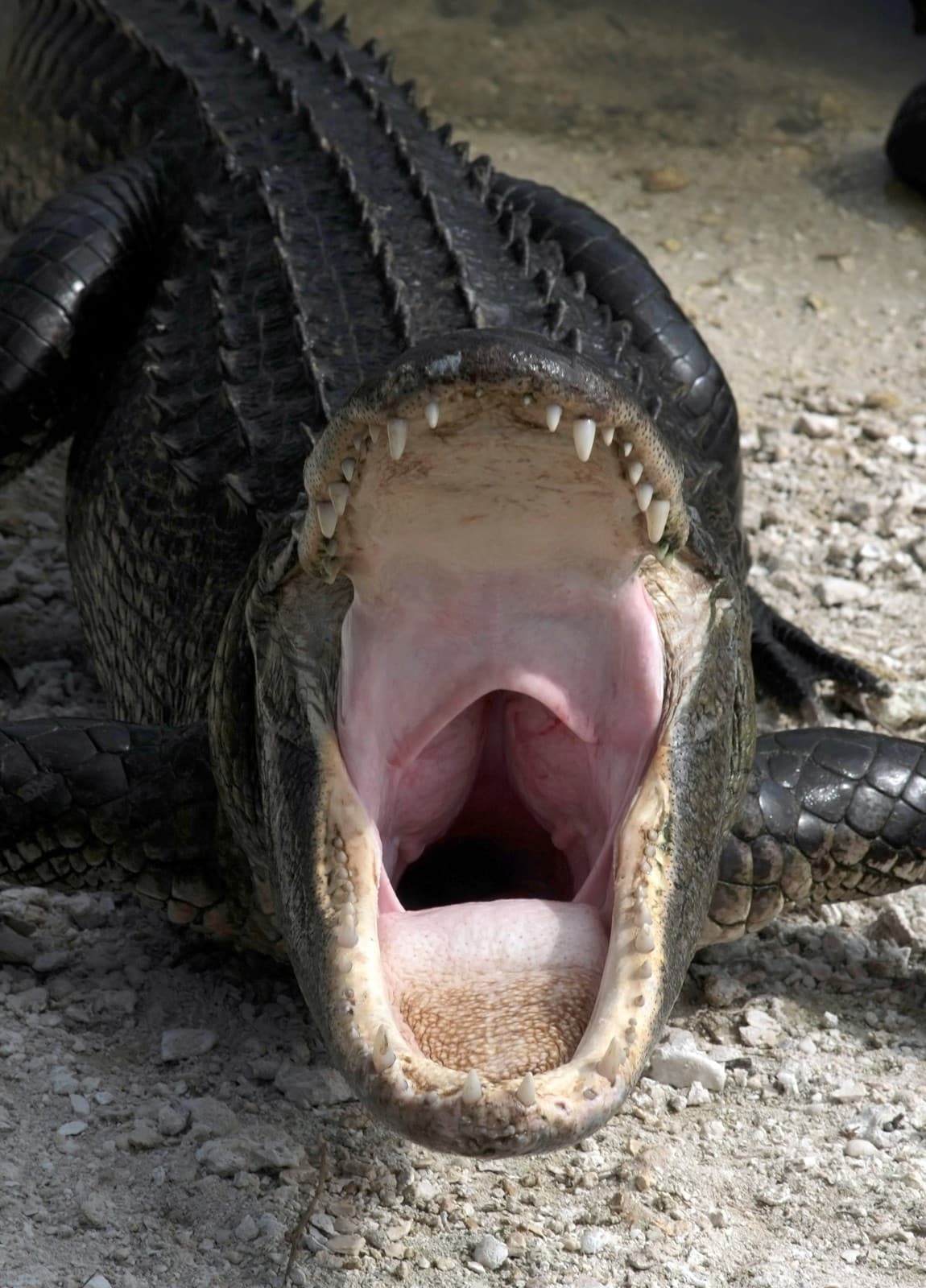
© Ianaré Sévi / CC BY-SA 3.0
The American alligator’s powerful jaws and broad snout enable it to crush prey of various sizes, from fish to large mammals. Their robust skull structure and interlocking teeth demonstrate the adaptations of a versatile predator capable of tackling diverse prey items in its wetland habitat.
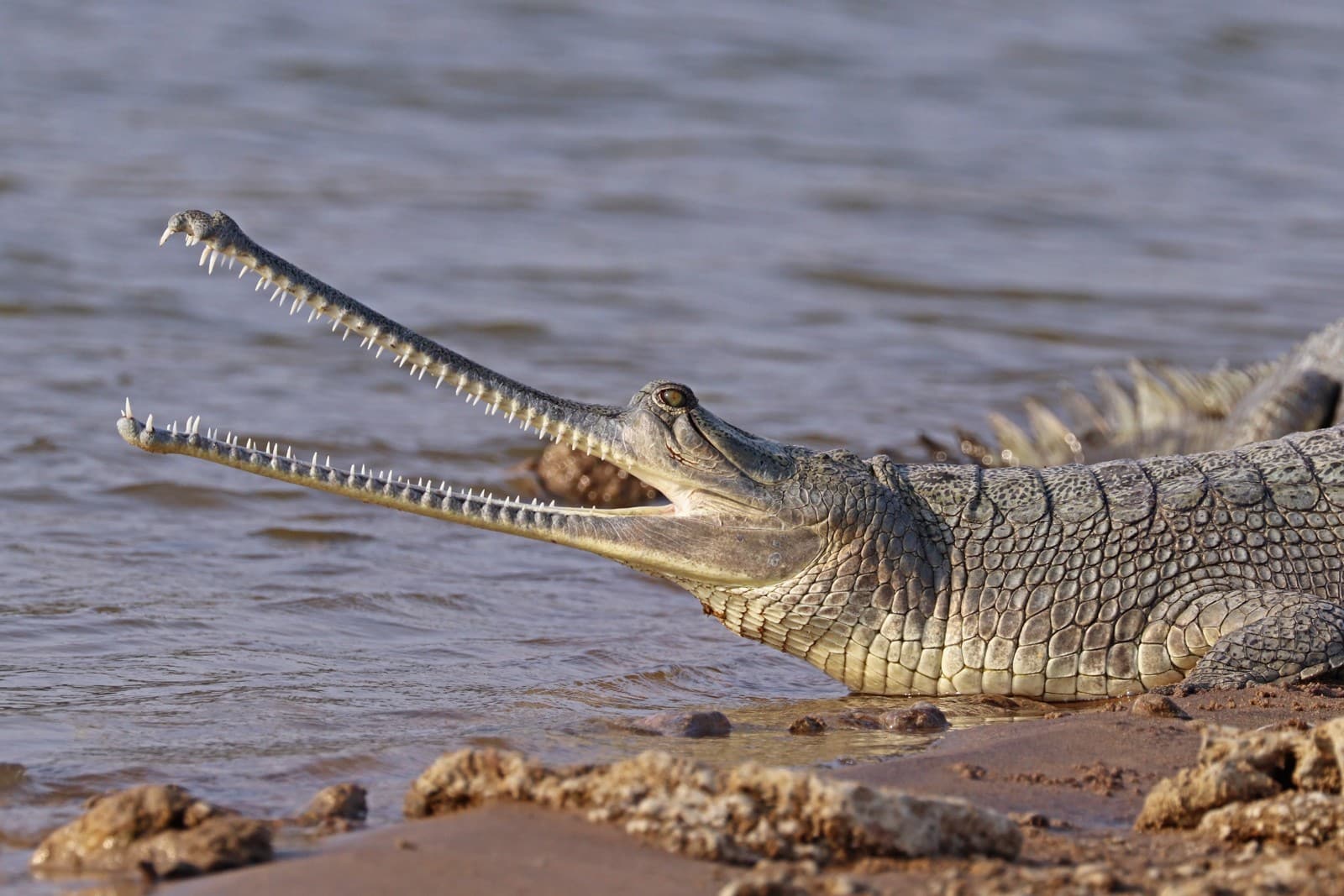
© Charles J. Sharp / CC BY-SA 4.0
The gharial’s distinctive narrow snout, filled with needle-like teeth, reveals its specialized fishing adaptations. This unique morphology makes it the most aquatic of all crocodilians, perfectly suited for catching slippery prey in fast-flowing rivers.
Key Differences Between Alligator and Gharial
| Feature | Alligator | Gharial |
|---|---|---|
| Size | 13-14 feet (4-4.3 m) | 15-20 feet (4.5-6 m) |
| Weight | Up to 1,000 lbs (450 kg) | Up to 2,200 lbs (1,000 kg) |
| Snout Shape | Broad and U-shaped | Extremely narrow and elongated |
| Diet | Generalist: fish, mammals, birds | Specialist: Almost exclusively fish |
| Habitat | Swamps, marshes, rivers, lakes | Deep, fast-flowing rivers |
| Distribution | Americas | Northern Indian subcontinent |
Habitat and Distribution
Alligators demonstrate remarkable adaptability, inhabiting diverse wetland environments from coastal marshes to inland swamps. They can be found throughout the southeastern United States and parts of China. In contrast, gharials require specific riverine conditions, surviving only in the deep, fast-flowing rivers of northern India and Nepal. This habitat specialization has contributed to their critically endangered status.
Hunting and Feeding Behavior
The hunting strategies of these reptiles reflect their distinct evolutionary paths. Alligators employ an ambush technique, using their powerful jaws to grab and crush prey ranging from fish to deer. Their broad snouts generate tremendous bite force, measured at up to 2,125 pounds per square inch (PSI).
Gharials, with their specialized snouts, execute precise sideways head movements to catch fish. Their numerous sharp, interlocking teeth are perfect for gripping slippery prey, though they’re incapable of tackling larger terrestrial animals. This specialization makes them incredibly efficient fishers but vulnerable to ecosystem changes affecting fish populations.
Conservation Status and Threats
While American alligators represent a conservation success story, having recovered from near extinction in the 1960s, gharials face a dire situation. Fewer than 235 breeding adults remain in the wild, primarily due to habitat loss and fishing net entanglement. Their specialized nature makes them particularly vulnerable to environmental changes.
Who Would Win in a Confrontation?
While natural encounters between alligators and gharials would never occur in the wild, comparing their physical capabilities reveals interesting insights. Alligators possess superior bite force and more robust bodies, adapted for tackling large prey. Gharials, despite their larger size, have delicate snouts unsuited for combat. In a theoretical confrontation, the alligator’s versatile hunting adaptations would likely prevail over the gharial’s specialized fishing features.
Evolutionary Adaptations
The distinct features of these species showcase remarkable evolutionary adaptations. Alligators maintain a more generalized body plan similar to their ancient ancestors, while gharials represent extreme specialization. Their divergent evolution demonstrates how similar ancestors can produce remarkably different descendants based on environmental pressures and available ecological niches.
Through studying the alligator vs gharial comparison, we gain valuable insights into how evolution shapes predators to fill specific ecological roles. While alligators demonstrate the advantages of adaptability, gharials show how specialization can create uniquely efficient predators – though at the potential cost of vulnerability to environmental change.
